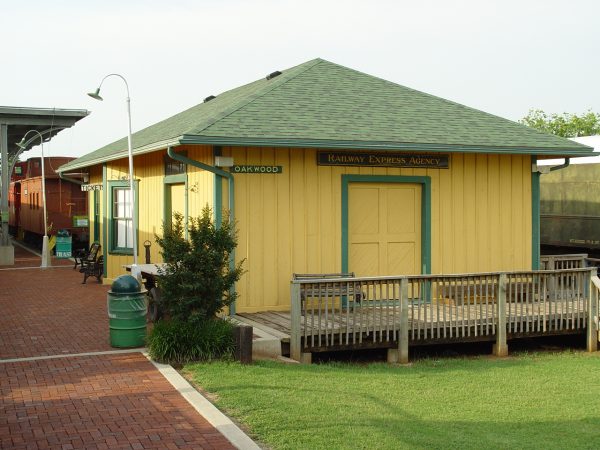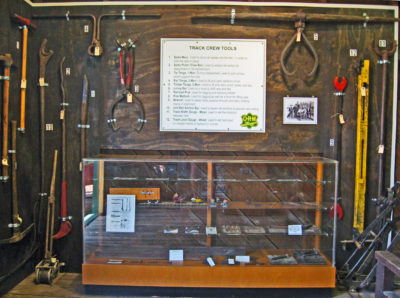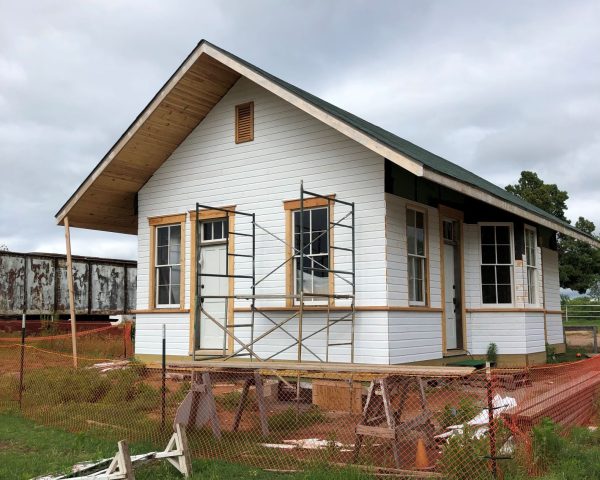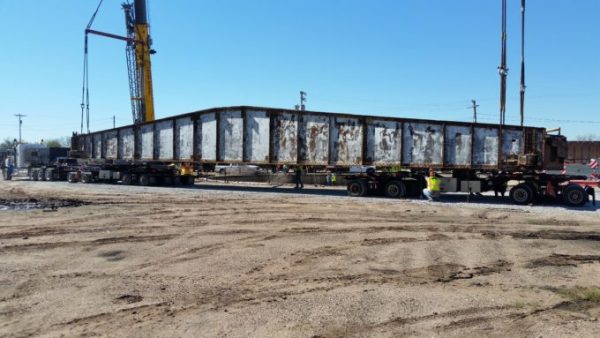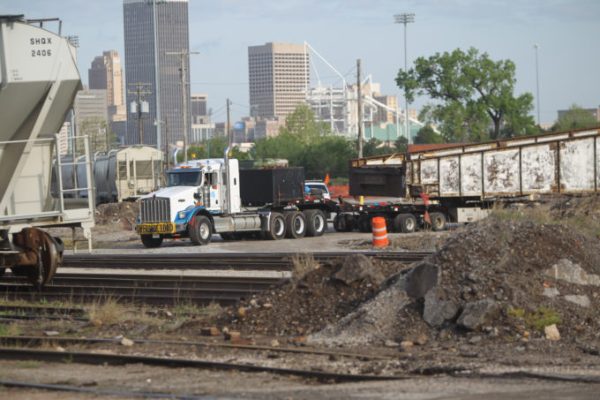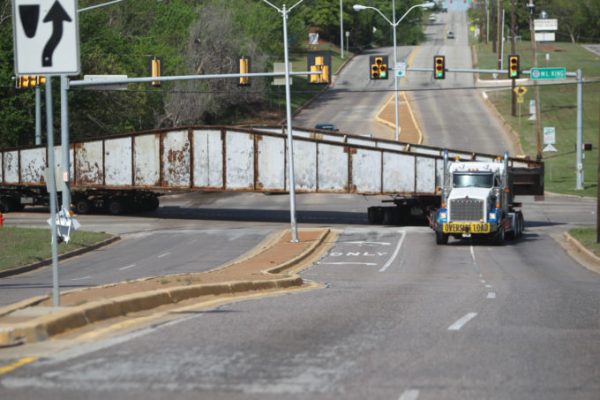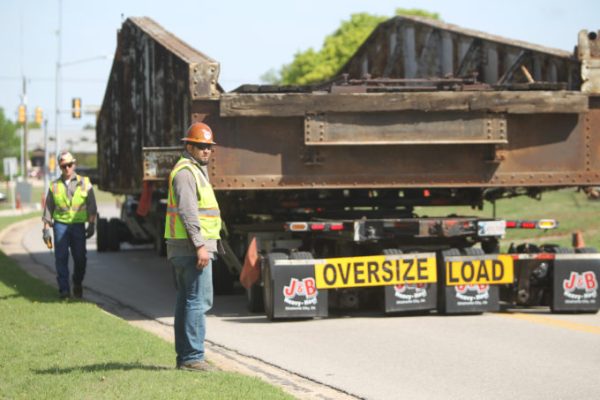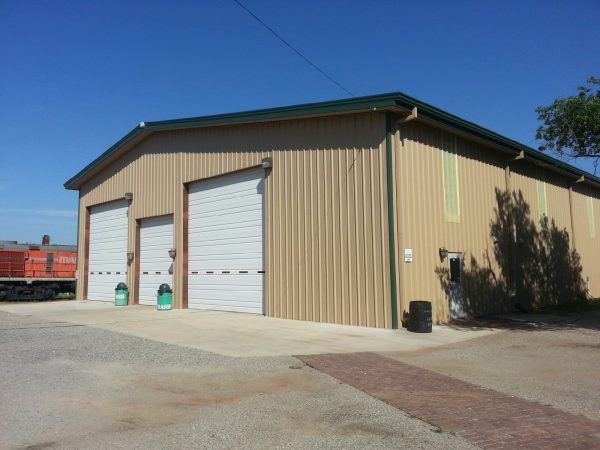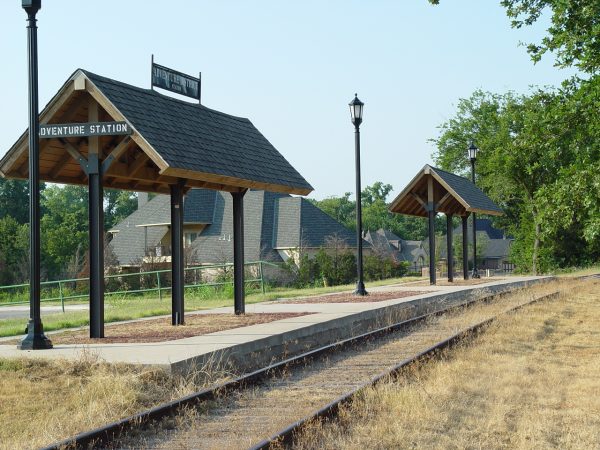Oakwood Depot
The Oakwood Depot was constructed by the Kansas City, Mexico & Orient railway line in 1905 in Oakwood, Oklahoma Territory. The Santa Fe railway leased the Orient line in 1929 and operated the station until 1958. In later years, it was acquired by the Dewey County Historical Society and moved to a property just west of Watonga, Oklahoma. The Depot was purchased by the Oklahoma Railway Museum and moved to the present location in 2000 and was completely restored. It currently houses a display room, the ticket office, and the gift shop.
The 1905 Oakwood Depot has two main rooms: the waiting room/ticket office on the south end, and the freight depot on the north end. Inside the former waiting room is the Oklahoma Railway Museum’s Gift Shop. The freight depot has been converted into a display room full of railroad artifacts, such as maintenance-of-way equipment, freight scales, signs, and more.
Union Station Canopy
This canopy once stood behind Oklahoma City Union Station south of the downtown area, just north of the modern I-40. The station was built by the Frisco and Rock Island Railroads and was served by passenger trains until the mid-1960s. It provided protection from the hot Oklahoma sun and the rain and snow while people boarded the trains. The last remaining section of canopy was dismantled by volunteers in 2002 and reassembled next to the Oakwood Depot in 2003. All the wood and steel in the canopy is original, dating from about 1930. On the larger beams, one of our members counted the tree rings: the tree it was cut from was growing when George Washington was born in 1732.
Le Flore Depot
The Le Flore, Oklahoma depot building was constructed in 1908 by the St Louis & San Francisco Railroad on the line between Ft. Smith, AR and Paris, TX. It replaced an older building, constructed in 1887 when the line was built, that had been washed out by a flood in 1907. It is possibly one of the three smallest depot buildings built by the Frisco in Oklahoma.
After the railway line’s closure and removal in 1980, the depot was sold to Hugh Kennedy a local man who moved it on to his adjacent land and used it for farm storage. The depot then was bought by his grandson Ron Ragland. Ron then sold the depot to his Uncle Herman Ragland. The building was donated to the Oklahoma Railway Museum by the family of Herman Ragland in 2017.
Display Car
Built as a tourist sleeper car in 1913 by Pullman Palace Car Co for use on the Saint Louis San Francisco RR. “The Frisco” purchased the car from Pullman in 1950 and converted it to a maintenance of way bunk and kitchen car.
The ORM acquired it from Capital Steel Company in May 2001 along with the Rock Island combine car (now the Party Coach), saving them from being cut up for scrap. This car was converted to a display car in 2002 and currently houses railroad artifacts and displays.
Frisco Turntable
This 100-foot turntable was originally installed in Sapulpa, Oklahoma, in 1920 by the St. Louis-San Francisco Railway (The “Frisco”). It was moved by the Frisco Railway to Oklahoma City in 1929 as a replacement for an 82-foot turntable. In 1980, many parts of the Frisco were purchased and absorbed into the Burlington Northern Railroad (later the BNSF). In 1994, the turntable was donated to the museum by the BNSF Railway. It was moved to the Oklahoma Railway Museum grounds in April 2017 and currently resides next to the new parking lot and the Leflore Depot. It is hoped to eventually build a turntable pit and return it to working order as part of the Museum Expansion Project.
Turntable Move
This 100-foot FRISCO turntable was originally installed in Sapulpa, Oklahoma in 1920, and moved in 1929 to Oklahoma City where it replaced a shorter turntable. It was donated to the Oklahoma Railway Museum in 1994 by the BNSF Railway. However, the Museum was still in its early years and did not have any space suitable for storing the large turntable, so it was stored in the BNSF ex-Frisco yard in south Oklahoma City. The yard was later acquired by the Stillwater Central Railroad, who still operates it today. By 2017 the ORM had grown and now had the extra space needed for the turntable. The turntable was loaded up and moved to the Museum’s grounds by J&B Heavy Haul on April 14, 2017. A pit for it to be installed and restored to operation is planned as part of the Museum Expansion Project. Photos below are by Jay Chilton.
Jim Murray Shop Building
The Jim Murray Maintenance Shop building is approximately 7400 sq. feet with two track bays, office, restrooms and mailroom. It was built in 2005 and is named for Jim Murray, one of the museums founding members and Director of Maintenance from 2004 to 2013. It is heavily used for storage, performing maintenance on equipment, restorations, and many other projects.
Robinson Street Bridge Logos
These Frisco and Rock Island Railroad heralds were displayed for almost 80 years (1931-2010) on Oklahoma City’s South Robinson Street Bridge. The bridge was located approximately a half mile east of Union Station and allowed both railroads to pass above Robinson to access to the station. The bridge was torn down to make way for a new bridge with the rerouting of the I-40 crosstown expressway. Each Concrete herald measures 5 ft. 8 in. by 4 ft. 8 in. The bridge railing is two feet high and the bottom portions are 22 inches thick. Each weighs in excess of 9000 pounds.

